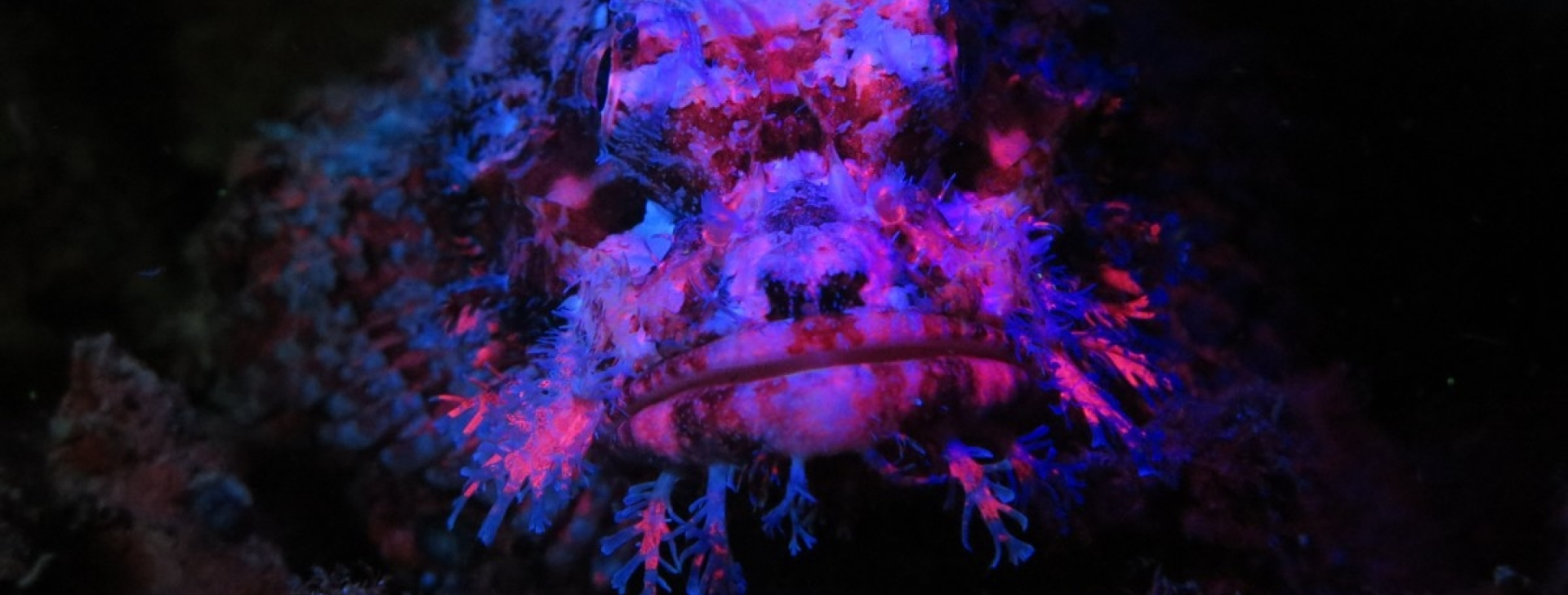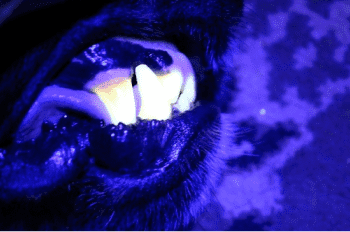
It is not well understood why it is that some corals and other sea creatures fluoresce. What is known is that some marine organisms (such as corals, sponges, anemones, jellyfish, clams, nudibranchs, shrimp, crabs, worms, fish) produce proteins which react to light causing this effect. The curious reader is encouraged to do a web search as there are a number of detailed peer reviewed scientific papers on this topic and about the scientific and medical implications of this phenomenon (see e.g. Green Fluorescent Protein (GFP) for an introduction).
Many theories have been postulated as to why marine organisms fluoresce:
Perhaps a symbiotic relationship between the coral and the zooxanthellae (algae) that forms
Inter-species communication
Perhaps the most likely answer however is that these creatures are made up of proteins that simply fluoresce for no particular reason other than they are made up of molecular elements that display fluorescence.
Mammal teeth fluoresce! What evolutionary selective pressure could possibly be at work here?
Often times the simplest answer to a scientific question is staring you in the face.
See the images below:
This is my lovely assistant, Kara. She will demonstrate that teeth fluoresce.


The simple answer to why some coral species fluoresce may be – “because they do”.
Note that fluorescence is different from phosphorescence (after excitation, light is emitted over a longer period of time, as can be seen e.g. in cathode ray tubes, i.e., in pre-digital age television sets) and from bio-luminescence (some marine organisms actively produce their own light using certain enzymes or symbiotic bacteria).
Some fluorescent anemones and corals have been discovered during daytime because they were bright red despite the fact that at the depth that they were found, red light should be absent, because red light is the first to be filtered out by water (which is also the reason why water appears blue from above, and why underwater images have such a blue tint, unless corrected). See also the article Red at depth: Colors disappear underwater, but not always which shows many examples (photos) of red fluorescent corals.
When divers first dove with torches under water, in the 1950’s, they discovered that many organisms were actually red. It was a biological mystery why organisms would spend energy to produce a pigment which would appear black below a certain depth anyway. It was speculated that this was used for hiding, but this hypothesis was not very satisfying.
New results from scientific research show that many fish, even deep sea fish, can actually see red light. One wonders why, since there is no red light at these depths.
It has been found recently that underwater organisms actually use fluorescence to transform the only light available to them, namely ultraviolet and blue light, into visible light of longer wavelengths, such as red (of all colors!), among others, for a number of purposes:
Besides from apparently protecting themselves from the harmful effects of ultraviolet radiation, as a kind of sunscreen, corals seem to do this in order to feed their symbiotic algae, which live inside their tissues. This allows the corals to dwell at greater depths, where corals without this capability are unable to thrive. Perhaps so, but maybe it’s just their elemental make-up.
More recent discoveries seem to suggest that fish also use fluorescence in order not to be easily discernible from the background of fluorescing corals, which otherwise would make them easy prey, and in order to communicate between each other (within the same species), at least over short distances, see Red fluorescence in reef fish: A novel signalling mechanism?.
The bottom line is that no one has a good handle on this yet.
If you have any questions, comments or suggestions – PLEASE don’t hesitate to contact us.